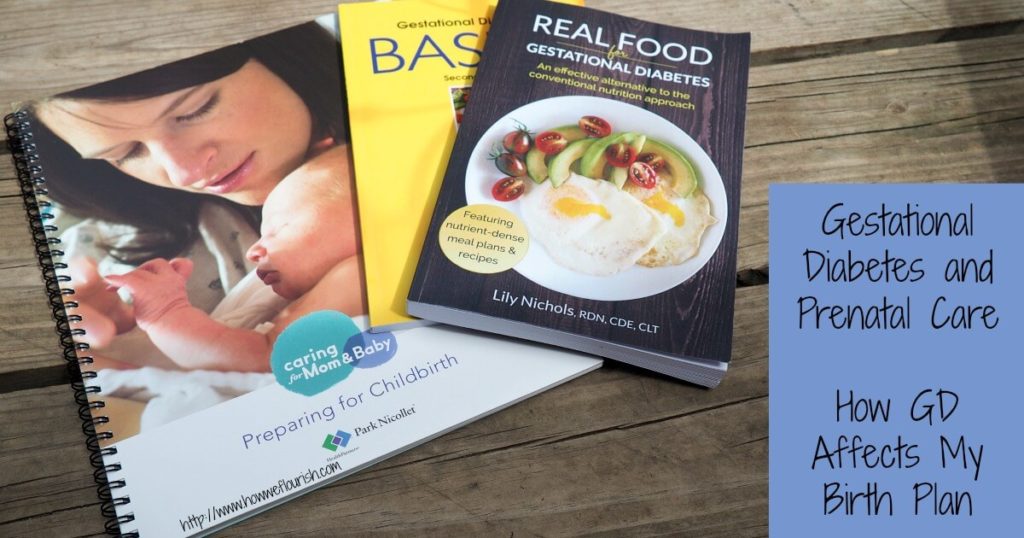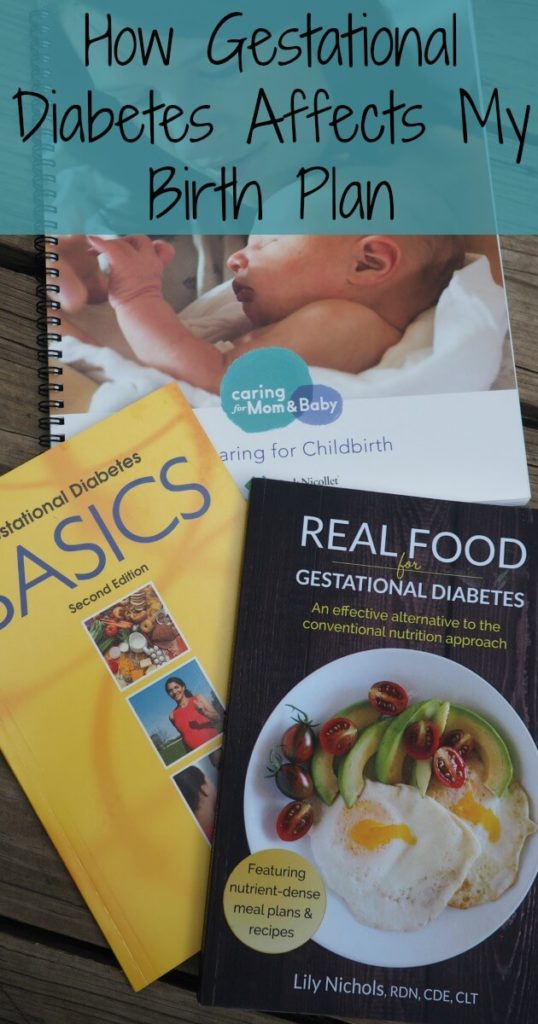I may receive a commission if you purchase something mentioned in this post. See more details here.
Getting the diagnosis of gestational diabetes is always scary on some level. I was not surprised by my diagnosis; I was prepared to have to deal with it. But even when you see this coming, there’s that question looming over every woman’s head: gestational diabetes prenatal care. How is this going to affect my care and birth plan?
I’m very blessed to be at a forward-thinking clinic and hospital with several midwives on staff. They are working on their Baby-Friendly designation and I have had nothing but good experiences with my prenatal care. My friends who have delivered there have nothing but good things to say. Every time I ask a question about my birth plan, I get great news. I would definitely consider them mom-friendly as well.
But my gestational diabetes diagnosis scared me. I knew it was coming, but now I was faced with the questions of how I would be treated going forward. After all, I was now considered “high risk.”
Gestational Diabetes Prenatal Care
First thing, I “needed” to stay off medication. This was a limit I imposed on myself, but know that some women just need the medication. That is okay. However, if I could keep my blood sugar under control with diet and lifestyle, my gestational diabetes prenatal care would just be like normal prenatal care. I would not need to have any extra monitoring done.
If I needed to start taking glyburide, a drug that encourages the body to produce more insulin, we would have to have a different conversation. If I needed to go on insulin, I would most likely be transferred to an OB. While the team of midwives at my clinic is beginning to change their thinking on this and may not have immediately transferred me, it is really just the beginning. In most places, it is standard practice to switch from a midwife to an OB once medication is started. Luckily for me, I was able to keep my gestational diabetes under control with diet and lifestyle. It wasn’t easy since I was very sensitive, but I could do it.
So at first, the only change when I switched to gestational diabetes prenatal care was that I was heading into the clinic more. The weeks that I wasn’t seeing my midwife, I was seeing a dietician or an endocrinologist to go over my blood sugars and talk about labor, delivery, and postpartum with gestational diabetes. I had 5 of these extra visits, going up to 36 weeks. Then I was back to just seeing the midwife. At each appointment, she would ask if my blood sugars were still looking good and do her standard measurements. I always breathed a sigh of relief when I was told I was measuring normal and my baby felt perfectly average sized.
Many women with gestational diabetes are given weekly (or more!) non-stress tests (NSTs) and biophysical profiles (BPPs) to ensure that baby and placenta are still doing well. My clinic considers this unnecessary if everything else checks out.

Going into Labor with Gestational Diabetes
And what about induction? It is so common to see women with gestational diabetes induced at 39 weeks or earlier. Sometimes they are just given a c-section. Often you hear about the induction failing, so they are then given an “emergency” c-section. If your blood sugars are out of control or if you are taking medication, this may very well be necessary. But induction at 39 weeks does not have to be standard.
As long as baby and I are healthy, my midwife will let me go as long as I want. Around 41 weeks we will start having discussions about induction. I will start getting NSTs and BPPs to ensure baby is doing okay in there and my placenta is not deteriorating too badly. But it will always be my choice. Knowing I can go as long as I want is so important to me. The cascade of interventions that comes with any sort of medication during labor is scary. Plus, my grandma went late with all 8 of her children. If that is what my family’s babies need, then I want to give that to mine. I want my baby to be “fully cooked.”
In fact, at one point during this conversation, my midwife said, “If you go to 43 weeks, we have to transfer you to an OB. That’s standard practice because of the risks of going that late.”
Okay, I love that I am allowed to do that. I really do. But I do want to get this baby out before 43 weeks. Yikes.
My Gestational Diabetes Birth Plan
The first thing I learned when I went back to my midwife after my diagnosis is that my water birth is out. My hospital has 4 water birthing suites, and since I see a midwife, I was allowed to have a water birth in the hospital. Not anymore. Due to the risk of shoulder dystocia (baby grows too big and his shoulders get stuck on the way out), I can labor in the water but need to be out when I am pushing so that the midwife can easily help baby and I should this problem arise.
Thankfully, the changes end there. When I arrive at the hospital, I can act like a normal patient. They will allow me to labor and push in any position I want. I do not need to be hooked up to an IV unless I can’t keep my blood sugar stable on my own. Since I am allowed to eat and drink as I want throughout labor, this is much less of a concern. If for whatever reason I should need continuous monitoring, my hospital offers wireless, waterproof monitors that will allow baby to be monitored while I take a bath, roam the halls, or do whatever I need in order to labor effectively.
Once my baby is born, we are allowed immediate skin-to-skin. We can delay cord clamping and all newborn procedures will be postponed or done with him in my arms. This is very important, since skin-to-skin and immediate breastfeeding will help stabilize baby’s blood sugar. Once he is no longer connected to me via the placenta, his blood sugar can drop as he no longer has access to my sugar, but his pancreas is still producing enough insulin to process my sugar. They will test him over his first 24 hours to ensure it never drops too low.
Gestational Diabetes and YOUR Birth Plan
Overall, I am a very lucky mom. I am blessed to have such an amazing team of midwives and hospital available to me – just 15 minutes down the road. If I was completely low risk, I would be lucky to have the birth I am planning without any push-back from my provider. To still have all of these opportunities, even with my diagnosis, places me in a much better position than most moms seeking a natural birth are in once they enter gestational diabetes prenatal care.
Every midwife, doctor, birthing center, hospital, etc. will have its own protocols for dealing with both completely normal mothers and births as well as for dealing with a mom who has gestational diabetes. Be sure to have these conversations every step of the way so that you know what to expect. I can only give my experience with my midwife and hospital. But I can tell you that you CAN have a natural birth.
Pin it:

Like what you see? Please support this blog and help me keep it running by signing up for my newsletter, purchasing products, or donating through the links below:
DISCLOSURE: In order for me to support my blogging activities, I may receive monetary compensation or other types of remuneration for my endorsement, recommendation, testimonial and/or link to any products or services from this blog. The information contained in this post is not intended nor implied to be a substitute for professional medical advice, it is provided for educational purposes only. You assume full responsibility for how you choose to use this information. For more information, click here.



Leave a Reply